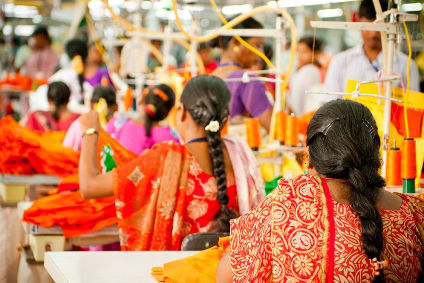The Indian textile industry, an eminent contributor amounting to 2% of India’s GDP in FY 2019-20, has been facing significant challenges, particularly in the wake of the COVID-19 pandemic which led to the sluggish growth. Building upon the prior research, this paper has identified a range of issues, including labour shortage, limited economies of scale, outdated/obsolete technology, power disruptions (load shedding), and uncompetitive policies, creating barriers to the industry’s growth. Emphasising the role of government intervention in facilitating optimal development, this research paper computed the discrete Meso-level data from various authorised secondary sources to conduct a brief before-and-after analysis of the challenges, especially focusing on the post-covid era.
Hence, the paper aims to propose certain strategic recommendations, such as easing funding access for Micro, Small, and Medium Enterprises (MSMEs) and introducing initiatives for women’s empowerment and enhanced youth participation in the textile labour market. Additionally, it emphasises the necessity of creating an environment conducive to inclusive innovation. Such proposed measures, collaboratively implemented by the Central and State Government of India (GOI), could serve as a catalyst for the textile industry in paving the way towards the goal of achieving sustainable and inclusive growth.
Introduction
The textile industry is one of the oldest and biggest industries in India catering to the most essential demand of the people. With a contribution of 4% to the Gross Domestic Product (GDP), the textile industry covers a wide range of sectors from man-made fibre to the power loom sector. The industry also has two broad segments, namely the unorganised (handloom, handicrafts and sericulture) and organised sector (spinning, apparel and garments). These segments could also be divided on the basis of methods of economies of scale i.e., small scale through traditional tools and methods, and large scale through the application of modern machinery and techniques, respectively. With the advent of the development due to globalisation (LPG policies) in the 1990s, there has been a paradigm rise in the production level of the industry. This was the cumulative effect of the factors including huge textile production capacity, a large and cheap base of skilled workforce, large domestic markets, very low import content, entrepreneurial skills as well and flexible textile manufacturing systems. Thus, becoming one of the largest textile industries in the world and earning 27% through exports. Overall, the industry also employed 4.5 crore people directly and 6 crore in allied sectors, inclusive of women and the rural population at a high rate (2019).
With the present change in the pace of the competition, trends, technology and business environment, there is a need to monitor, improve and evaluate (through Key Performance Indicators) the industry goals/objectives in India as it has an impact on varied sectors directly or indirectly. For instance, the agriculture sector is supported by the production of agro-textiles, which helps in improving agricultural practices and enhances crop yields. Analysing the role of textiles along with their significance in bringing foreign exchange and employment opportunities, it could be seen that India basically has certain states in each region which are known for their contribution and development in the Indian textile sector. States like Gujarat, Rajasthan and Punjab (North India) are prominent contributors to the textile industry among which Gujarat is known for its strong textile infrastructure and Rajasthan is known for its traditional textile craftsmanship, particularly in areas like Jaipur and Jodhpur. Along with this, Punjab has a thriving textile industry, especially in the production of woollen textiles whereas states like Tamil Nadu, Karnataka, and Andhra Pradesh are major players in southern India. Tamil Nadu, particularly the city of Coimbatore, is known as the “Manchester of South India” which has a well-established textile industry. Karnataka (cities like Bengaluru and Mysore) has a strong presence especially in silk and garment manufacturing and Andhra Pradesh, particularly Tirupur, is a significant hub for textile exports, especially in the production of knitwear.
Hence, the paper tries to delve deeper into the issues and general possible recommendations of the Indian textile industry with the help of a case study- an overview of one of the hubs of Indian textiles, Tamil Nadu.
Case Study- Overview of Tamil Nadu’s Textile Industry
Tamil Nadu is one of the strongest textile players in India, and largely contributes to the economic growth of the Indian textile industry with the presence of its sub-sectors viz., Spinning, Handloom weaving, Power loom weaving, Processing, Knitwear, Apparel and Garments. Their contribution to Tamil Nadu’s socio-economic reforms in accordance with the present market dynamics and making the state one of the safest locations for the investors to project their investments with the available resources/requisites like infrastructure, policies maintaining trade terms and protecting the rights & safety of the players (2019, Annual report of Tamil Nadu Textile Industry). Thus, making the state one of the emerging textile industrial states of India with the presence of adequate manpower, business environment and income (wages) under the varied sub-sectors.
Click Here To Download The Paper


📌Analysis of Bills and Acts
📌 Summary of Reports from Government Agencies
📌 Analysis of Election Manifestos

